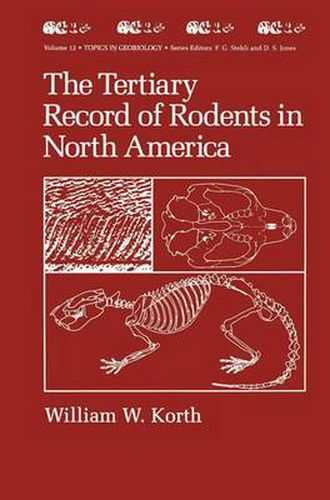Readings Newsletter
Become a Readings Member to make your shopping experience even easier.
Sign in or sign up for free!
You’re not far away from qualifying for FREE standard shipping within Australia
You’ve qualified for FREE standard shipping within Australia
The cart is loading…






This title is printed to order. This book may have been self-published. If so, we cannot guarantee the quality of the content. In the main most books will have gone through the editing process however some may not. We therefore suggest that you be aware of this before ordering this book. If in doubt check either the author or publisher’s details as we are unable to accept any returns unless they are faulty. Please contact us if you have any questions.
Nearly half of the known species of mammals alive today (more than 1600) are rodents or gnawing mammals (Nowak and Paradiso, 1983). The diversity of rodents is greater than that of any other order of mammals. Thus, it is not surprising that the fossil record of this order is extensive and fossil material of rodents from the Tertiary is known from all continents except Antarctica and Australia. The purpose of this book is to compile the published knowledge on fossil rodents from North America and present it in a way that is accessible to paleontologists and mammalogists interested in evolutionary studies of ro dents. The literature on fossil rodents is widely scattered between journals on paleontology and mammalogy and in-house publications of museums and universities. Currently, there is no single source that offers ready access to the literature on a specific family of rodents and its fossil history. This work is presented as a reference text that can be useful to specialists in rodents (fossil or recent) as weIl as mammalian paleontologists working on whole faunas. Because the diversity of rodents in the world is essentially limitless, any monograph that included all fossil rodents would similarly be limitless. Hence, this book is limited to the re cord of Tertiary rodents of North America. The several species of South American (caviomorph) rodents that invaded North America near the end of the Tertiary are also not included in this text.
$9.00 standard shipping within Australia
FREE standard shipping within Australia for orders over $100.00
Express & International shipping calculated at checkout
This title is printed to order. This book may have been self-published. If so, we cannot guarantee the quality of the content. In the main most books will have gone through the editing process however some may not. We therefore suggest that you be aware of this before ordering this book. If in doubt check either the author or publisher’s details as we are unable to accept any returns unless they are faulty. Please contact us if you have any questions.
Nearly half of the known species of mammals alive today (more than 1600) are rodents or gnawing mammals (Nowak and Paradiso, 1983). The diversity of rodents is greater than that of any other order of mammals. Thus, it is not surprising that the fossil record of this order is extensive and fossil material of rodents from the Tertiary is known from all continents except Antarctica and Australia. The purpose of this book is to compile the published knowledge on fossil rodents from North America and present it in a way that is accessible to paleontologists and mammalogists interested in evolutionary studies of ro dents. The literature on fossil rodents is widely scattered between journals on paleontology and mammalogy and in-house publications of museums and universities. Currently, there is no single source that offers ready access to the literature on a specific family of rodents and its fossil history. This work is presented as a reference text that can be useful to specialists in rodents (fossil or recent) as weIl as mammalian paleontologists working on whole faunas. Because the diversity of rodents in the world is essentially limitless, any monograph that included all fossil rodents would similarly be limitless. Hence, this book is limited to the re cord of Tertiary rodents of North America. The several species of South American (caviomorph) rodents that invaded North America near the end of the Tertiary are also not included in this text.